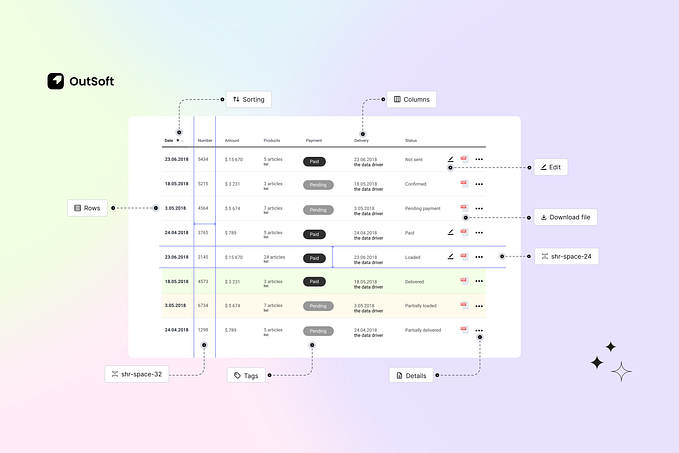Creating Clean Community Mobility Co-operatives
A proposition for mobility system innovation in SE Europe.

Introduction
Transforming mobility systems is a grand challenge facing all communities.
Communities that rapidly escape dependence on fossil fuels and private cars will be cleaner, healthier, wealthier and fairer — while reducing the wider harm that they cause socially and ecologically.
Thriving Communities therefore aims to help communities with the mission to create radical new community mobility systems that do not require fossil fuels or private vehicles — and to demonstrate the viability and benefits of such systems. (You can read more here on why we see this is vital).
We believe that there is an excellent opportunity for communities in SE Europe to create new Community Mobility Co-operative models that will help to accelerate a shift to cleaner electric mobility systems on a local scale.
We see a great opportunity for these Community Mobility Co-operatives to take a leading role in the rollout of vital electric vehicle (EV) charging infrastructure, as their first main move.
In this article we outline a proposition for these Community Mobility Co-operatives, covering:
- The opportunity space
- Why Community Mobility Co-operatives?
- The investment case for EV charging
- Challenges with EV charger deployment in SE Europe
- Next steps
We are seeking interest from community leaders and organisations that would like to collaborate to advance this proposition and to create local Community Mobility Co-operatives. If this could be you, then do get in touch.
The Opportunity Space
This proposition targets mobility solutions for goods, individuals and small groups of people who need to travel between a myriad of departure points and destinations across a community, at distances that are not easily walkable and on routes that conventional ‘backbone’ public transport services struggle to serve. This is where cars still really dominate local mobility systems.
Moving from combustion engine mobility to electrically powered mobility is surely key to this part of community mobility system transformation. However, it also brings new challenges like where to charge, new power grid demands, ensuring sufficient renewable power supply, integration with other mobility options, and optimising use of more capital-intensive electric vehicles.
We envisage a new electric mobility system that is made up of:
- Shared fleets of various electrically powered vehicles (eg. bikes, scooters and cars) — as shifting from private to shared vehicle fleets will be vital to maximising vehicle utilisation, freeing up public space and minimising material/capital resource requirements.
- Open EV charging networks — that ensure whenever vehicles are stationary their batteries are charging, to be ready for the next user. Charging needs to be highly reliable, and to deliver the best value and cleanest possible power supply to the vehicles.
- Renewable power — being vital to maximising the climate and overall air quality benefits of an electric mobility system. Renewable generation can also support community energy independence and security, especially when cleverly integrated with the distributed power storage that vehicles can offer.
At this moment in time, there is a unique opportunity for communities to get ahead with deployment of the critical EV charging infrastructure — using models that are designed to maximise benefits to communities while accelerating a mobility system transformation. Therefore, we believe that EV charging infrastructure should be the starting focus for new Community Mobility Co-operative models.
Over time, Community Mobility Co-operative models could then leverage their head start made in charging infrastructure, to further integrate shared electric vehicle fleet management and renewable power generation into their model.

Why Community Mobility Co-operatives?
Europe now has a strong foundation of community energy initiatives that show what is possible through bottom-up community collaboration in the energy sector, mainly with a focus on renewable power supply. Though, such actions are still less prevalent in SE Europe, and Thriving Communities also sees a large need to incubate community energy supply initiatives in the region.
The core of community energy initiatives is that they are initiated and developed by networks of citizens who get together and take collective action to improve their local energy systems. Community energy means having strong community-benefit objectives behind a business model for energy action. Community energy initiatives can generate a wide range of social benefits such as cost-savings, employment opportunities, shared financial returns, improved social connections, and people being warmer and healthier in their homes.
So far, we find fewer cases of community-led mobility services and infrastructure — though there are some good examples like Modo car sharing co-operative in British Colombia and Co Cars/Charger in the UK.
Community energy initiatives are striving to reclaim a slice of the current energy supply system and infrastructure, in order to tackle entrenched system failures and reprioritise social benefits. This is vital work. Yet there are similar structural failures in today’s mobility systems, and EV infrastructure offers communities much more of ‘green field’ opportunity. So, we think that this is a key moment where communities can bring the experience and principles developed through community energy action to bear on community mobility, and especially the roll out of new charging infrastructure.
Of course, given that renewable power supply will also be a key part of electric mobility systems, there is great integration potential between community power generation initiatives and EV charging initiatives. Communities that are already ahead on the energy supply side will be well-placed to also take the leap into mobility and EV charging.

The Investment Case for EV Charging
Charging infrastructure is the backbone of new electric mobility systems. Therefore, as part of the system-shift, it needs to be deployed as new critical infrastructure that leads demand and through models that have a clear social purpose.
EV charging infrastructure has a very robust business case, especially as the number of electric vehicles grows and demand increases. The chart below illustrates a simple model of the investment case offered by EV charging infrastructure, showing simple annual returns.
In this assessment, we have varied the retail price of charging from 17c/kWh (approximate household price of electricity in Slovenia at the end of 2022) to 39c/kWh. The current range of observed market prices being offered by private EV charging providers in Slovenia is 32–39 c/kWh.
Clearly, EV charging infrastructure is clearly a good investment, by any measure.

This assessment shows that:
- At current market prices, EV chargers are a profitable investment from year 1. This is obviously very good for the owners of the chargers, but less so for the users.
- At a charging price similar to current household power prices, the investment cost of chargers is soon covered, as is ongoing maintenance. Overall, it is a slightly better than break-even case at this price.
Therefore, communities that deploy EV chargers primarily with a social purpose, have a large range of possible power prices to work with (up to 22c/kWh difference between a break-even price and higher current market prices). The lowest price is best for users. A higher price would generate more revenue that can be reinvested in network growth and equitable coverage, wider mobility transition action, and other community-benefit projects. For example, the 25c/kWh option plotted here illustrates a potential middle ground where a community mobility co-operative might want to pitch their retail prices.
The ’fat’ in current private charger pricing shows that communities are going to be poorly served if this critical infrastructure deployment only happens through models that prioritise financial profit for a limited number of investors.
Note: in this modelling it is assumed that each charger is used for 4 hours each day = 44 kWh usability per day x 365 days. So, there is quite some potential for higher utilisation and a further improved investment case, while also some short term risk. This is a simple model to illustrate the overall value case. Factors such as price inflation (on both sides of the equation), discount rates, depreciation etc have not been included.

Challenges with EV Charger Deployment in SE Europe
The above investment case shows that there are impressive potential financial returns and economic benefits on offer to communities that get organised and invest in EV charging infrastructure.
However, there are of course also challenges that need to be overcome in order to make these investments, and the resulting benefits, a reality. Here we outline some of the current challenges facing EV charger deployment that we are observing in SE Europe.
To achieve a system shift, there is a need for charging infrastructure rollout to lead demand. This is not yet being meaningfully achieved in SE Europe, and we hear from many public and private actors that they are thinking to invest in chargers once they see there is enough demand from EV owners and users. But of course, sufficient charging infrastructure is actually vital to encouraging and enabling EV uptake. People want confidence that they will be able to charge when and where needed. For example, the effects of slow rollout are already being seen in peak travel seasons, with visitors from other parts of Europe (where EV uptake is higher) struggling to find places to charge and facing long wait times. But for charging rollout to properly lead demand, more strategic, community-interest governance approaches and patient investment capital are required.
Experience so far in the region also shows a wide variation in technical reliability, user-friendliness and pricing of EV chargers. For example:
- A lack of technical knowledge about EV technologies and reliability of providers leads to poor selection/decision making during procurement of chargers. The result is around 25% of EV chargers are already out of service.
- EV drivers are required to use different apps and payment systems for the range EV charging service providers; so there is a challenge to improve simplicity for users (while avoiding exploitative monopolies)
- As people living in apartment buildings have few options to install their own chargers, they are forced to use expensive on-street charging that has limited availability.
- Public investment in charging infrastructure is sometimes relying on incumbent energy companies for deployment, which has not resulted in optimised technical performance, usability or pricing.
We believe that well-organised community-based providers of EV charging services can help to overcome many of these challenges. Though we note that a collaborative approach between such community models would also be needed to address issues like overall user-friendliness.

Next Steps
Here we have illustrated that there is a great opportunity for communities to get together and take a leading role in the rollout of EV charging infrastructure. The investment case is good, the challenges are not insurmountable, and there is a vital need to embed social benefits in the models behind deployment of this new critical infrastructure.
We believe that communities should pursue this proposition to start designing and deploying new Community Mobility Co-operative models that have a first focus on EV charging infrastructure. This will deliver direct community benefits. It also provides a pathway and learning space to start pursuing an overall mission of creating radically better community mobility systems.
We will be working to advance this work of designing and launching Community Mobility Co-operative models, including seeking seed funding to accelerate this work. Therefore, we are seeking interest from community leaders and organisations that would like to join us in this.
Our focus will be on supporting communities in south-east Europe to make this proposition a reality, as this is where Thriving Communities is currently prioritising efforts. So, we are especially keen to hear from people and organisations in SE Europe that want to lead this work in their community.
We are also very happy to hear from others in other parts of Europe, and the world, who can contribute expertise and/or are working on something similar. We could team up to exchange experiences or as part of larger collaborations/EU projects.
All feedback on this concept is very welcome.
If you are interested in the ideas outlined here, have suggestions and/or would like to explore collaboration opportunities then please get in touch!
This concept has been jointly developed by Korimako and EVTech4U as part of the Thriving Communities initiative.
EVTech4U are leaders in e-mobility infrastructure in SE Europe, providing charging technology and asset management services. Contact Mauricio Sardi.
Korimako are specialists in the ‘how’ of transformational change, and support communities to design and deliver change initiatives. Contact Tim Taylor.











